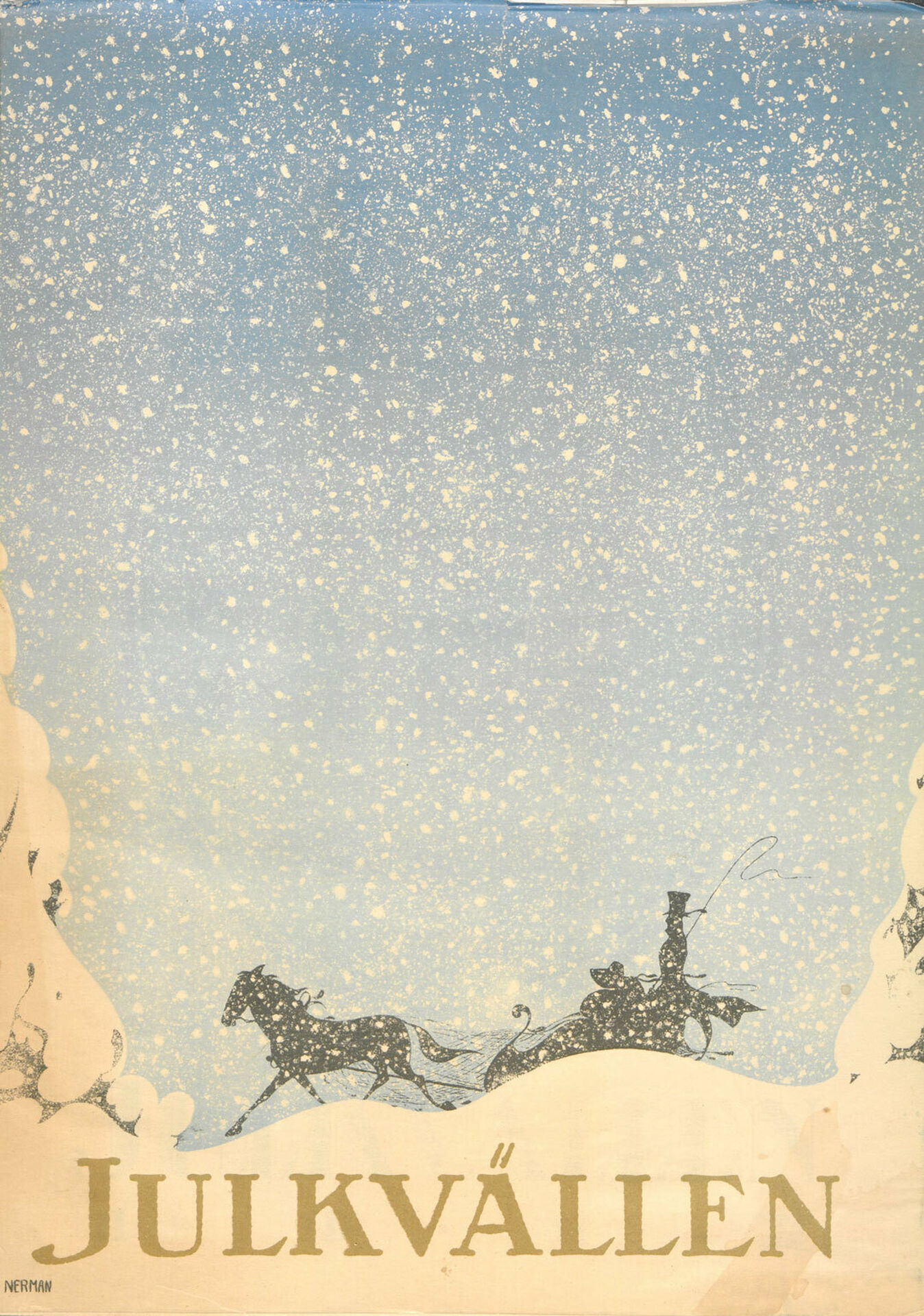Just in time for Christmas 2024, visitors could enjoy a small exhibition in the Old Library, with a treasure trove of images from the turn of the last century that have shaped our ideas about Christmas traditions, colours, textiles, and interior design.
The first Swedish Christmas magazines appeared around the mid-19th century, partly inspired by the British illustrated weekly press and the Swedish satirical magazine Söndags-Nisse (1862–1924). These publications released specially designed colourful Christmas editions. In Sweden, Publicistklubben [the Publicist Club] was a pioneer: as early as 1881, they published the first edition of Julqvällen [The Christmas Evening]. Emil Åkerlund, later part of Åhlén & Åkerlund, initiated the most enduring magazine of all, Julstämning [Christmas Spirit], in 1906. The magazine is still published around Christmas to this day. Distribution became very efficient with the support of the mail-order company Åhlén & Holm, and the first edition distributed a remarkable 112,000 copies across the country. Other examples of publishers include the publisher Svensk Läraretidnings förlag [the Swedish Teachers’ Journal], which introduced Jultomten [Santa Claus] in 1891. Bonniers published Snöflingan [The Snowflake] (1890-1907), Konstnärsklubben [The Artists' Club] published Jul [Christmas] (1886–1912), and Idun Magazine also released Christmas editions.
These Christmas magazines were often quite lavish, with cover images based on original drawings and paintings by prominent artists of the time, such as Jenny Nyström, Carl Larsson, Einar Nerman, and John Bauer.
Jenny Nyström’s and Carl Larsson’s Christmas images have been reproduced and circulated across generations. They have without a doubt helped shape the 20th-century image of a perfect Christmas, with specific colours, textiles, interior design, and traditions. Jenny Nyström was the first Swedish artist to give the traditional Santa Claus a distinct character through her illustrations for Viktor Rydberg’s children’s story Lille Viggs äfventyr på julafton [Little Vigg’s Christmas Eve Adventure] published in 1875, and Tomten [Santa Claus] published in 1881. These publications marked the beginning of her career. In Nyström’s world, the relationship between Santa Claus and children is central, whereas Santa is absent in Carl Larsson’s illustrations. Instead, Larsson focuses on family community and children’s play.
The Old Library
The Old Library tends to host small exhibitions, mainly based on material from the art library and our archives. The magazines in Christmas Spirit around the Turn of the 20th Century came from the art library's collections.




